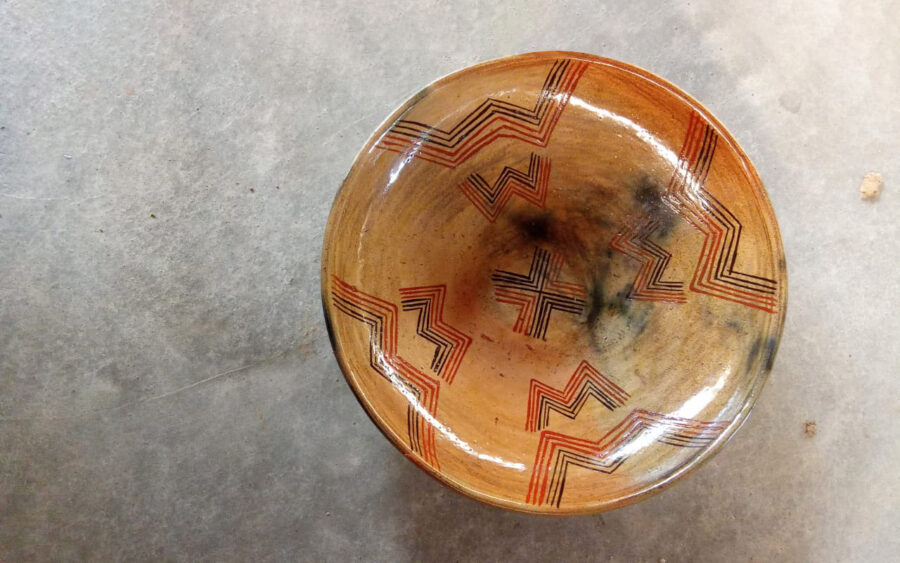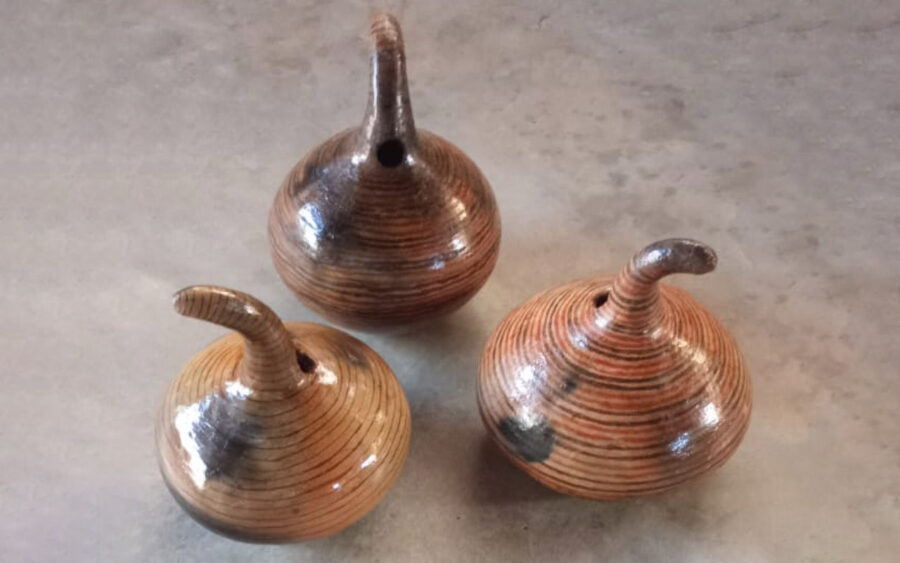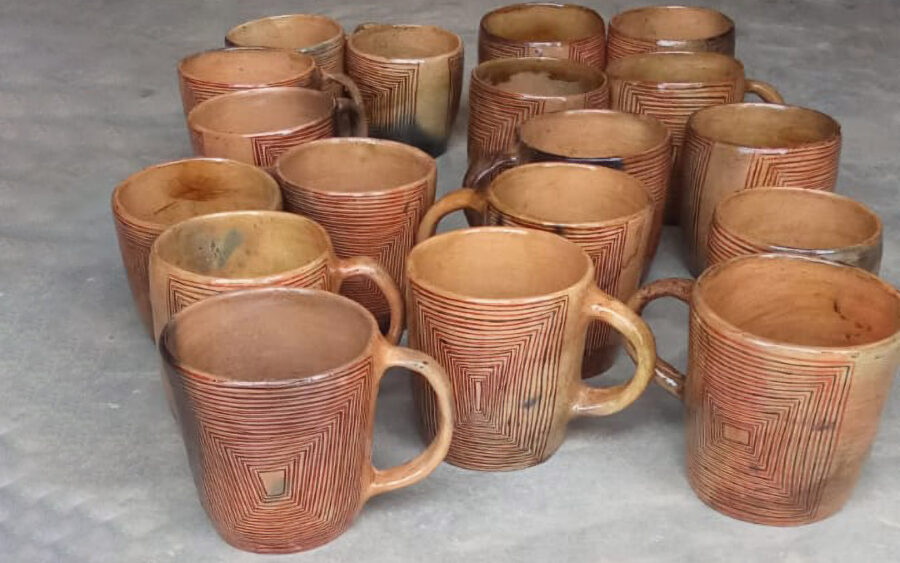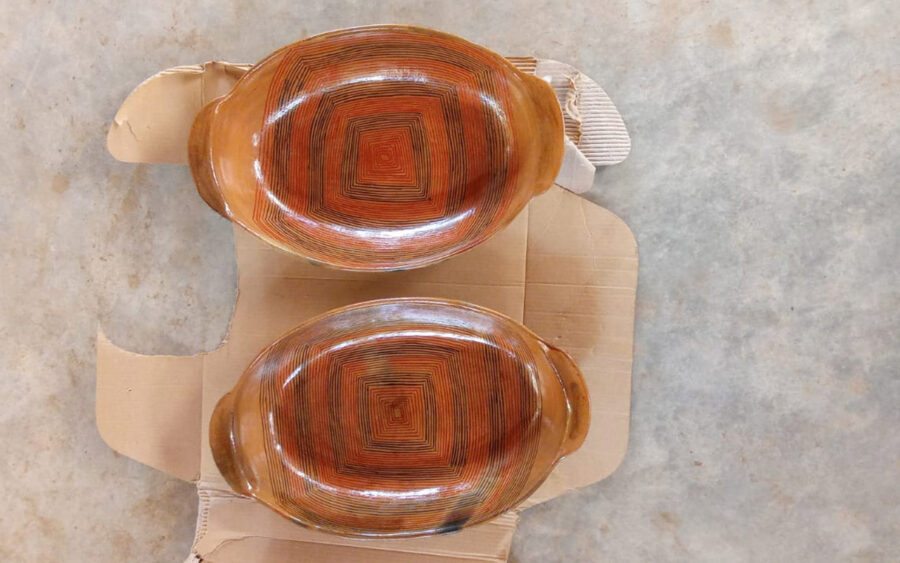Peru is a country with an incredibly rich cultural heritage! Many traditions and applied cultural elements are listed as the intangible heritage of the country, and some are recognized internationally by organizations such as UNESCO.
One of the last traditions recognized internationally in 2021 was the tradition of making ceramics for the Awajun tribes. At first glance, simple and almost childishly painted ceramics have become known all over the world for their preserved very ancient traditional method of manufacture and their deep connection with nature and the traditions of the Amazonian Indians.
According to one of the most famous legends of this tribe, ceramics or «duve», as it is called in the language of the Awajun Indians themselves, was born thanks to Nant (Moon) and Auhu (Ayaimama bird). Duve means wet and greasy clay. According to legend, Auhu was the wife of Nantu, and as it should be in families, the husband went hunting, and the wife stayed to look after the household. But Auhu was very voracious and when the pumpkins began to ripen, Auhu picked the ripest ones and ate them with her big mouth (after looking at the bird ayaymama we wrote about her, you can believe that Auhu also had a very big mouth))). When Nantu returned from hunting, Auhu lied to her husband that the pumpkins were not ripe yet and there was nothing to eat. But one day, when the husband returned earlier, he saw his wife eating ripe pumpkins. Out of frustration, Nantu decides to leave his wife for heaven, Auhu herself also decides to get married on the same vine that her husband climbed, but after climbing high, she can’t stand it and breaks down. When she falls, her belly is full of pumpkins, bursts and the pumpkins fly all over the world. Unhappy that she could not reach her husband’s ear, she turned into a bird and her mother. It is believed that where the ayaimama sets on a full moon, you can find the best clay for making ceramic products there.
The Awajun belong to the Hibaro language group and are the second largest ethnic group in Peru, after the Ashaninka. The tribe lives in the northern part of Peru, in the regions of Amazonas, Loreto, San Martin. Despite the fact that there has long been a merger with the civilized world, many Awajun settlements try to preserve the ancient traditions of their ancestors, especially in their relations with nature. For the Amazonian tribes that have come into contact with modern civilization. This is a very difficult task.
The manufacture of ceramics is a unique process associated with the ancient knowledge of the Awajun tribe, accumulated over many centuries. Only women work with ceramics. This is a whole ritual, inextricably linked to the Amazonian nature, because everything necessary for ceramics is mined in the jungle.
Initially, there is a search for a good fatty clay «duwe». As we described above, this word has the same roots as the word fat, and the verb to get fat, because according to Awajun legends, clay is fat that is released from the earth. Clay is selected in a special way and must necessarily be gray or white in color and with air pores. After selecting the clay, it is necessary to prepare it for work, for this clay is mixed with the ashes of the bark of the yukuku tree. This allows you to give future products good heat resistance.
For better waterproofing and pore coating, ceramic products after initial firing are rubbed from the inside with leaves of plants that have the common name «duke». As a rule, these are yucca leaves or cocoons. After that, the ceramics are sent back to the oven and fired until a dark natural color is obtained.
This is followed by a very important stage, this is the rubbing of freshly baked products with yukipe wax. This element seals the walls
of the parts and provides a transparent coating of ceramics with varnish. «yukaipe» is obtained from a decoction of young milled shoots of the lacre tree (Vismia sp), which are harvested on a full moon. After that, the ceramics are painted with geometric patterns using natural colored varnishes. The bases for such varnishes are either white latex «daum» from the milk Caspi tree (Couma macrocarpa) or a durable resin obtained from a variety of the Copal caspi tree, also called «kunchai».
To give color, natural dyes are added to the base, such as: fruits of the achiote tree — red, charcoal — black, ground lime stones — white and others, depending on the region. For painting, brushes made of human hair «intash ayaimu», similar to a clay candle, are used as standard. It is important to note that ceramic products in the Awajun culture symbolize the family hearth and comfort.
Our Cordillera Escalera College has a small but unique Ayahuasca Museum, where many traditions from the list of cultural heritage of Peru are presented in one form or another, including the famous Awajun ceramics (more details…), which is an important element of Peru’s vast cultural heritage. We will continue to introduce you to the Amazon in our next news.




